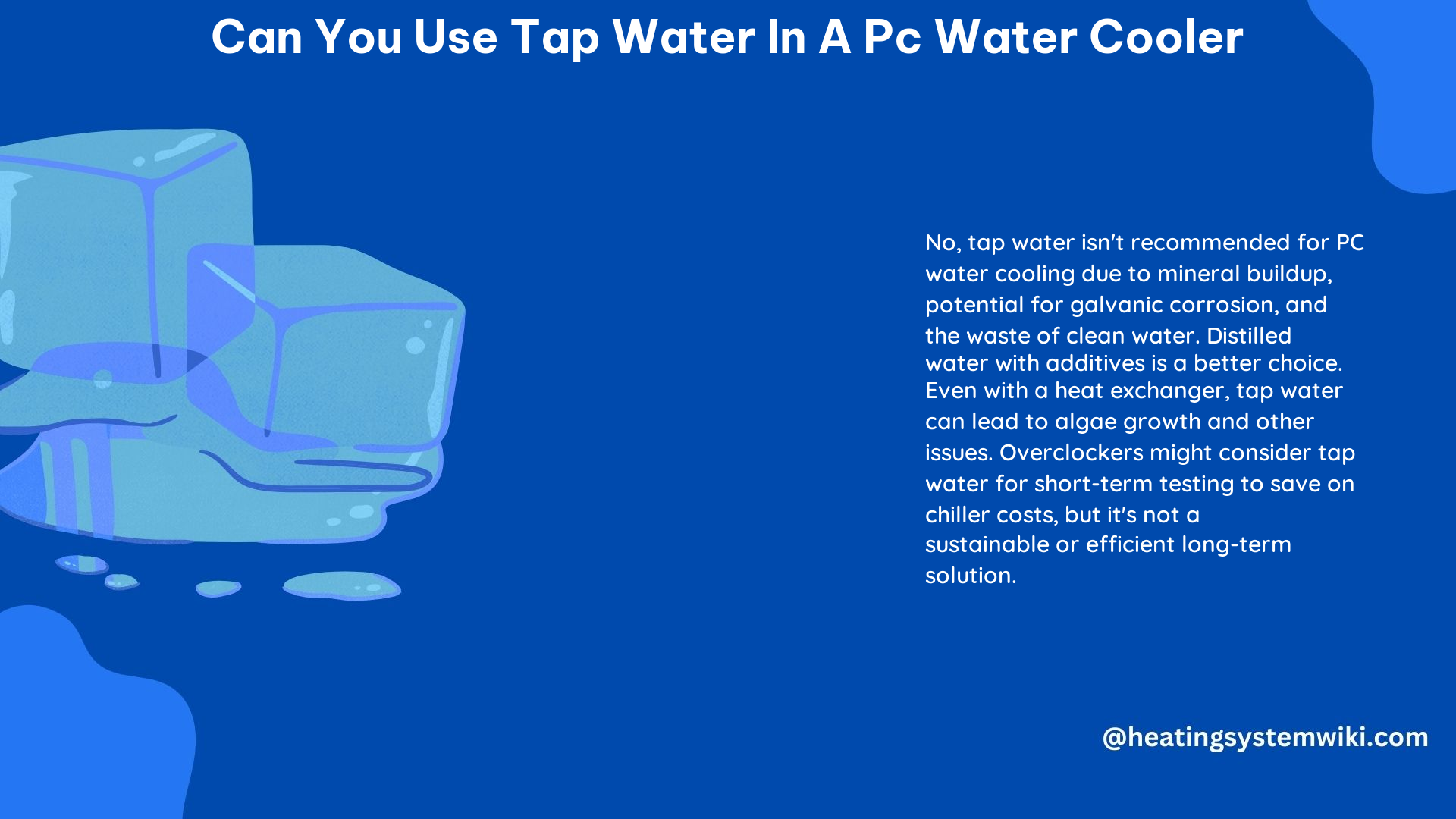Using tap water in a PC water cooler is generally not recommended due to the potential for damage caused by minerals, chlorine, and other contaminants present in the water. These impurities can build up and clog the micro fins in the water blocks, leading to reduced cooling efficiency and potential damage to the system. Additionally, the minerals in tap water can cause galvanic corrosion, which can deteriorate the metals in the water cooling components.
Understanding the Risks of Using Tap Water
Tap water can contain a variety of dissolved minerals, such as calcium, magnesium, and iron, as well as chlorine and other disinfectants. These substances can have the following effects on a PC water cooling system:
-
Mineral Buildup: The minerals in tap water can precipitate and form deposits on the internal surfaces of the water cooling components, including the water blocks, radiators, and tubing. This buildup can restrict the flow of coolant, reducing the system’s cooling efficiency.
-
Clogging: The mineral deposits can also accumulate in the micro fins of the water blocks, effectively clogging the cooling channels and preventing efficient heat transfer from the CPU and GPU.
-
Corrosion: The minerals in tap water can cause galvanic corrosion, where different metals in the water cooling system react with each other, leading to the deterioration of the components.
-
Biological Growth: Tap water may also contain microorganisms, such as bacteria and algae, which can thrive in the warm, moist environment of a water cooling system. This biological growth can further contribute to clogging and reduced cooling performance.
Mitigating the Risks with Tap Water Cooling

While using tap water in a PC water cooler is generally not recommended, some users have reported success in certain situations. Here are some strategies that can help mitigate the risks:
-
Water Quality: If the tap water in your area is particularly clean and free of high mineral content, it may be possible to use it in your water cooling system with minimal risk. However, it’s important to monitor the system closely for any signs of buildup or corrosion.
-
Heat Exchanger: Incorporating a heat exchanger into your water cooling loop can help isolate the tap water from the coolant circulating through your PC components. This allows you to use tap water as the heat transfer medium while keeping the same coolant in the system, reducing the risk of contamination.
-
Thermostatic Valve: Using a thermostatic valve can help control the temperature and flow rate of the tap water, ensuring that it remains within the optimal range for your water cooling system.
-
Filtration: Employing a high-quality water filter or purifier can help remove some of the contaminants from the tap water before it enters the water cooling system, reducing the risk of buildup and corrosion.
-
Regular Maintenance: Regularly flushing and cleaning the water cooling system, as well as replacing the coolant, can help mitigate the effects of any contaminants that may have entered the system.
Technical Considerations for Tap Water Cooling
When using tap water in a PC water cooler, it’s essential to consider the following technical specifications:
-
Flow Rate: The flow rate of the tap water should be compatible with the water cooling components in your system. Ensure that the CPU and GPU blocks, as well as the pump, can handle the pressure and flow rate of the tap water.
-
Pressure: Similarly, the pressure of the tap water should be within the acceptable range for your water cooling components. Excessively high pressure can cause leaks or damage to the system.
-
Temperature: The temperature of the tap water should be within the operating range of your water cooling system. Excessively hot tap water can reduce the cooling efficiency and potentially cause thermal throttling of your PC components.
-
Compatibility: Verify that the materials used in your water cooling components, such as the tubing, fittings, and blocks, are compatible with the minerals and other substances present in the tap water. Some materials may be more susceptible to corrosion or degradation when exposed to certain contaminants.
Conclusion
While using tap water in a PC water cooler is technically possible, it is generally not recommended due to the potential for damage caused by minerals, chlorine, and other contaminants. The risks of mineral buildup, clogging, and corrosion outweigh the potential benefits, especially in systems with high-performance components.
If you do choose to use tap water, it’s crucial to implement strategies like heat exchangers, thermostatic valves, and filtration to mitigate the risks. Additionally, regular maintenance and monitoring of the system are essential to ensure its longevity and optimal performance.
For the best results and long-term reliability, it’s recommended to use distilled or deionized water, or a purpose-built water cooling fluid, in your PC water cooling system.
References:
– So much Better than expected! Cooling my PC with TAP WATER
– Tap water cooling | Overclock.net
– Coolant or Distilled Water for water cooling | Tom’s Hardware Forum
